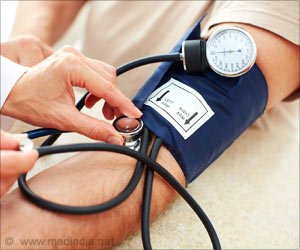Telemonitoring Could cut Heart Attack, Stroke Rate by 50% For People With Hypertension

“Home blood pressure monitoring linked with treatment actions from the health care team delivered remotely (telehealth support) in between office visits has been shown to lower blood pressure more than routine care, and patients really like it,” said Margolis. “In addition, by avoiding serious cardiovascular events over five years, our results indicate significant cost savings.” Patients reported that they liked having support from a trusted professional, rapid feedback and adjustments to their treatment, and having someone to be accountable to.
Margolis reports that over five years, the savings from reduced cardiovascular disease events exceeded the telemonitoring intervention costs by $1,900 per patient.
Advertisement
“The findings were just short of statistical significance,” said Margolis, “meaning they could have been due to chance. However, we were surprised that the figures on serious cardiovascular events pointed so strongly to the benefit of the telemonitoring intervention,” she said.
Uncontrolled high blood pressure is the largest modifiable risk factor contributing to death from all causes. Nearly half of U.S. adults have high blood pressure, defined as equal to or greater than 130 mm Hg systolic (top number), or 80 mm Hg diastolic (bottom number). However, most adults with high blood pressure don’t have their numbers under control.
Four hundred fifty participants with uncontrolled high blood pressure were enrolled in the study, conducted at 16 primary care clinics within the HealthPartners system in Minnesota. Participants were blinded and randomized into two groups: 222 patients were in the routine primary care group and 228 in the telemonitoring group that also received one year of remote care managed by a pharmacist. In the telemonitoring group, patients were able to measure their blood pressure at home and send it electronically to the pharmacist, who then worked with them to make medication and lifestyle changes in their treatment.
In clinic visits for all participants, researchers monitored blood pressure at enrollment, six months, 12 months, 18 months and five years; kept track of any heart attacks, strokes, coronary stents, heart failure hospitalizations and heart-related deaths that occurred; and counted all the costs of their blood pressure-related care and cardiovascular event care.
They found:
In the telemonitoring group, there were 15 serious cardiovascular events (5 non-fatal heart attacks, four non-fatal strokes, five heart failure hospitalizations, 1 CV death) among ten patients. This group also had two stent placements, making the total event rate of 5.3%.
In the routine primary care group, there were 26 serious cardiovascular events (11 non-fatal heart attacks, 12 non-fatal strokes, three heart failure hospitalizations) among 19 patients. They also had ten stent placements, making the total event rate 10.4%.
Based on these findings, “widespread adoption of the telemonitoring model might help U.S. adults with uncontrolled high blood pressure avoid serious cardiovascular events and reduce health care costs,” according to Margolis and colleagues. They recommend future studies to figure out how to increase the number of patients engaged in home blood pressure monitoring over many years, and to measure cardiovascular risk factors and cardiovascular events over that extended period.
The study’s limitations are its relatively small size, and it was at a single medical group’s urban and suburban primary care clinics, which may not represent the diversity of patients who receive care in other settings across the country.
Source: Eurekalert
Source link
#Telemonitoring #cut #Heart #Attack #Stroke #Rate #People #Hypertension



